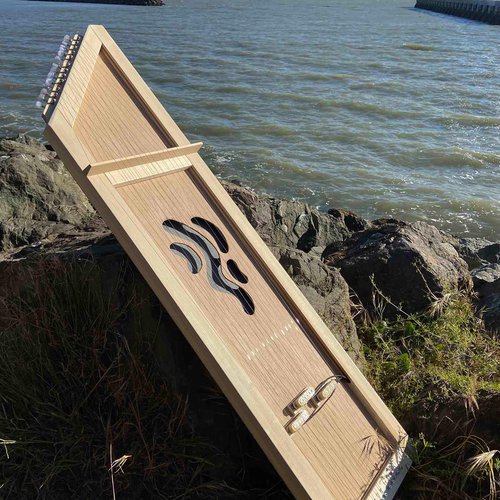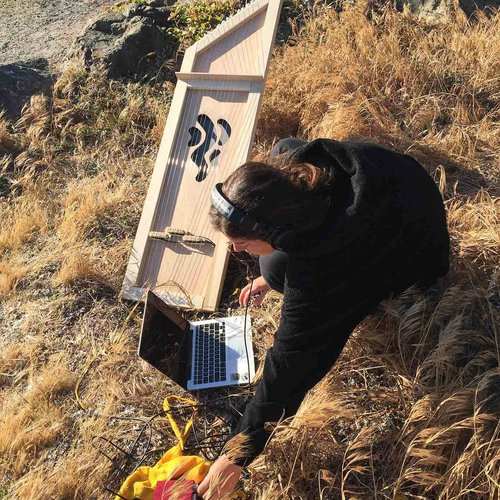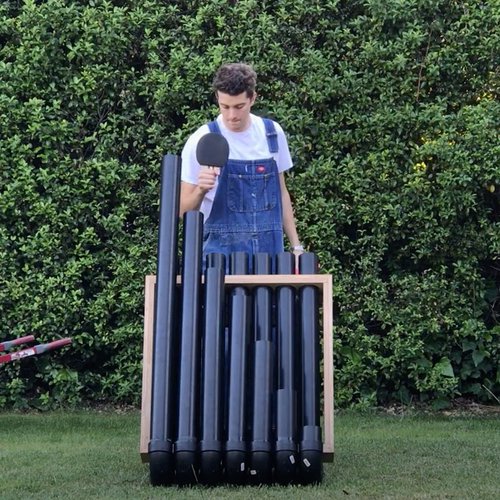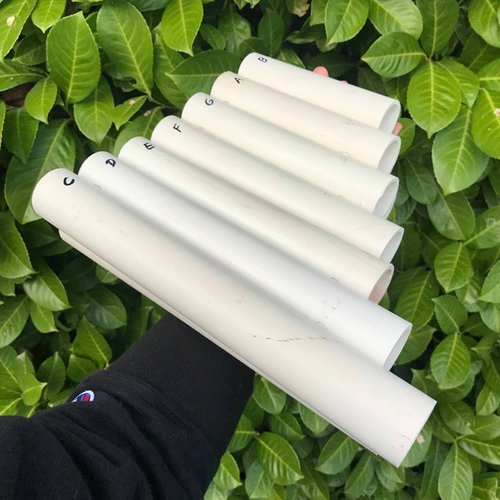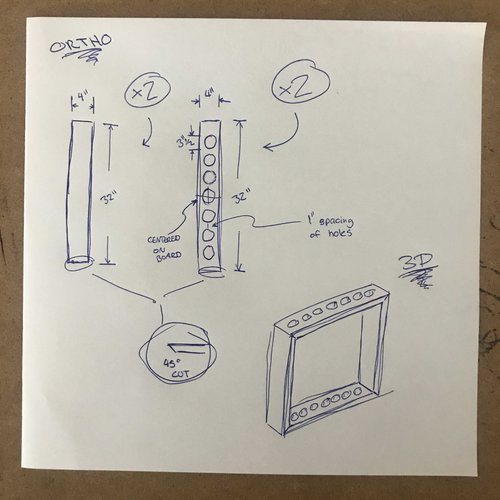Changing course with COVID-19 and finding resonance online
Professor Corey Jones reflects on shifting from the woodshop to Zoom, merging improvisation with instrument making in spring’s Acoustic Objects course.

During the spring 2020 semester, students in professors Corey Jones and Sung Kim’s Acoustic Objects course set out to make some noise. This cross-disciplinary studio explored industrial design and experimental music through projects designing and constructing cigar-box ukuleles, handmade Bluetooth speakers, and original objects. Field trips to Dolby Labs, Blackbird Guitars, and Kim’s woodworking studio were planned to supplement curriculum beyond the Bench Room (CCA’s furniture-making space).
Students experiment with sound and material early in the semester.
Then, as Jones puts it, “things changed.”
Halfway through the semester, the COVID-19 pandemic closed CCA’s campuses. In this new reality of physical distancing, critiques and classes were conducted over Zoom, and students invented sound-making objects with the resources and materials around them: Daniel Escobar made a PVC drum set, Jonathan Shin made a portable electric guitar, Callie Robertson made a minor-toned instrument for horror soundtracks called a “langolier,” Kate Greenberg created a lupini harp that plays with the wind.
Following, Jones, who is also chair of CCA’s Industrial Design program, reflects on the unintended, ahem, adventure of Acoustic Adventures.
Professor Corey Jones reflects on changing course amid COVID-19
Acoustic Adventures was developed as a hybrid course between the Industrial Design and Furniture programs. This class was designed to take advantage of the best attributes of each program—exploration, experimentation, refinement, and crafted execution—and blend the learning and students from each department. This class was intended as an immersive investigation into the shape of sound.
For a little while this is exactly what it was. We listened and learned and created objects that allowed us to effect with our hands the way that we experienced sound. It was the best of what CCA and interdisciplinary learning has to offer. Our students crafted unique string instruments, experimented in electronic sound enclosures that shifted materials in unexpected ways. We teamed up to create a macro scale xylophone and proposed bold new instruments and sound sculptures.
And then, things changed.
The COVID-19 pandemic, which has impacted all of our lives, was with us as a murmur since the start of the semester. With CCA’s diverse international population, we were experiencing it in real time through the news, as well as through the personal accounts of our students and their families. It was heartbreaking.
What began as a vague concept that seemed so far away suddenly changed every aspect of our lives. It challenged everything we knew. What we did, how we interacted, the way we worked, how we got groceries. Everything from our professions to our personal lives was suddenly scary and unfamiliar. It is easy to dismiss this in retrospect, or in the apathy of fatigue from our now months-long isolation, but it is important to reflect on how significantly our lives have changed.
And then, we changed.
There was a pause and a chance to restructure the class knowing that we would be going forward in isolation and online formats. For a making-based studio class this presented a full restructuring. We had spent the semester on short-form experiential assignments, and we were on the outset of their final project proposal when the pandemic hit the reset button. Instead of converting our class in a format we felt safe in delivering online, we instead presented our students a choice on how they wanted to proceed in this course.
The path of least resistance would be to adapt our class to design sound in the abstract. Change the structure to rely purely on the design and development, rather than the creation of objects. This was not the path that we chose.
From bedrooms and basements, our students rallied to manifest their instruments and to make them real. They undertook this challenge in spite of not being able to be in a shop or rely on the tooling and processes that so often define our practices. They improvised and evolved their designs based on their individual making constraints and continued to create.
The simple act of creating, became a driver in this class: a unifying mission to craft and create in any way we could and celebrate our victories however modest they might be. We continued to test and prove our ideas and concepts and move closer to manifesting our designs and to making sound.
As faculty, we created how-to videos from our own homes, and crafted our own works along with the students. Professor Kim transformed his personal shop to produce components from the students’ designs and cut-lists. We delivered materials, tools, and components through distance and gloves and face masks. We helped our students to realise their designs, trying where we could to break down the barriers to creating. We became equal parts cheerleaders and material suppliers. I’d like to think that we taught a little along the way, but simply being present and cheerful seemed as important than any tutorial I could have recorded. It was not perfect, and it was not easy, but it was creating, and learning, and it was defiance in the face of the many obstacles our new world posed.
At the end of the semester, I found myself struck by how familiar the results felt. Even though we were removed from the studio, the objects created prompted the same reactions of surprise and awe that I always feel at the end of a class. The ebb and flow of the individual challenges and breakthroughs hit all the familiar notes (pardon the pun) of any other class that I’ve taught. It was my genuine pleasure to see the students rise to the challenge in front of them and to create their objects. I was struck on how those objects might be different than if we’d been in the studio, but I struggle to see how they might be better than what we created in isolation.
I am proud of our students and of their resilience. I am proud of their commitment to their craft and of the objects that they created. Their willingness to embrace the uncertain and uncomfortable and to continue to create is what I will remember about our semester in isolation.
During the final critique over Zoom, students presented their self-directed projects, whether renders or realized objects.
The spring 2020 Acoustic Objects course was co-taught by Industrial Design Chair Corey Jones and Furniture Adjunct Professor Sung Kim with TA Inaki Garat. Students included Edward Aye, Rohan Bell, Daniel Escobar, Kate Greenberg, Sungmin Ko, Melissa Lim, Callie Robertson, Jung Hoon (Johnathan) Shin, and Carolyne Tan.
